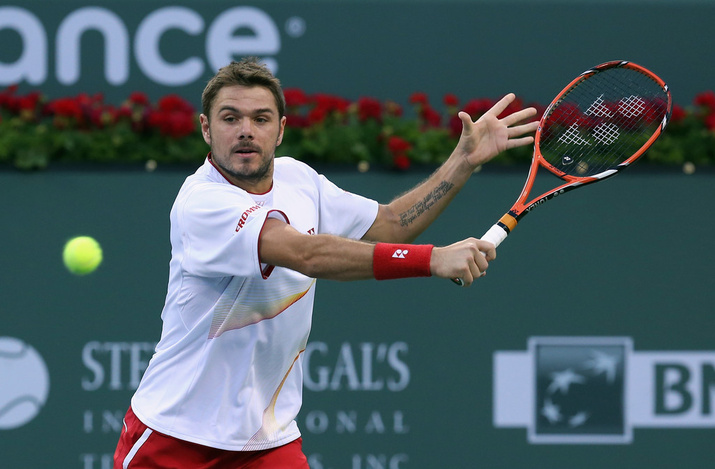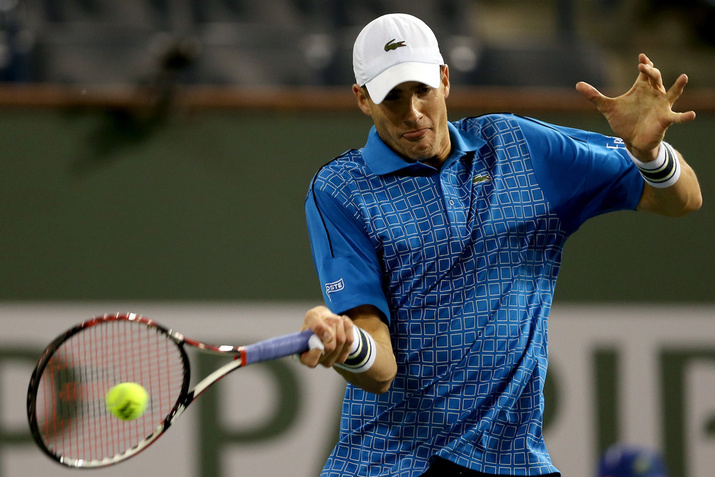Don't miss any stories → Follow Tennis View
FollowClosing the Gap: Is the Big Four Era Fading?
It has been said that the past several seasons mark a golden era in men’s tennis. Fusing raw talent with mental toughness, Roger Federer, Rafael Nadal, Novak Djokovic, and Andy Murray (collectively known as the “Big 4”) have consistently played a brand of tennis that is head and shoulders above the rest of the field. For the better part of a decade, these four players have secured the vast majority of the key titles, particularly at the majors and Masters 1000 events. But their dominance will eventually come to an end. It has always been a question of when that end would come, and the answer might be sooner than we think.
A quick glance at the rankings will provide some evidence that change is potentially afoot. Two members of the Big 4 – Murray and Federer – no longer reside within the top four of the rankings. Instead they are ranked 6th and 8th, respectively. Their drop in the rankings should come as no surprise, given that their results of late have been subpar by their lofty standards, and Murray has had to cope with the pitfalls that come with returning to the game after undergoing back surgery.

The struggles and absences of members of the Big 4 mean opportunities for the remainder of the field, however. Plenty of other players have done well to take advantage. None have managed to do this better than Stanislas Wawrinka. The Swiss started off his year with a title in Chennai before going on to shock the world by defeating Djokovic, Tomas Berdych, and Nadal in succession to win the Australian Open. But Wawrinka is not the only competitor to savor that taste of victory. Veteran Lleyton Hewitt took the title in Brisbane, while guys like Marin Cilic and upstart Grigor Dimitrov have also taken their turns in the winner’s circle. Contrast that with the Big 4, who thanks to the efforts of Nadal and Federer, have three total titles this year.
Granted, some of the early disappointments for members of the Big 4 are due to trying to find their rhythm, confidence and the occasional niggling injury. But by the time Indian Wells rolls around, it is expected that at least one of the game’s established elite will flip the switch and garner another Masters 1000 shield for his résumé. Past history at the Indian Wells event definitely supports this assumption. For the last 10 years, every title there has been won by Federer, Nadal, or Djokovic with the exception of 2010, in which Ivan Ljubicic enjoyed the tournament of his life.
Based on what has occurred at the 2014 BNP Paribas Open, though, this trend is in danger of yet again being broken. Ukrainian Alexandr Dolgopolov provided the biggest surprise of the tournament when he upset world No. 1 Nadal in the third round. The win alone was shocking, but the fact that he was able to do so by hitting more than twice as many unforced errors and serving below 50% was astonishing. Murray did not fare much better than the Spaniard. He had to channel his inner Houdini to escape fast-rising Czech Jiri Vesely in the third round, but he was unable to pull off the act a second time in his next match against Milos Ranoic. And, although still in the title hunt, Djokovic has had trouble subduing some of his opposition, like the unheralded Alejandro Gonzalez.
The upsets and surprisingly close battles over this past week and before Indian Wells have not been lost on the tennis media or the players either. Members of the media have repeatedly quizzed players on whether there is chatter in the locker room about a potential shift in the men’s game. While the players are quick to insist that there is still a gap between the field and the Big 4, that gap is getting smaller. Perhaps John Isner said it best after his win over Fernando Verdasco when he stated, “People are believing a little bit more that you can go out and beat these guys. They’re not running through tournaments like they have in the past.”

Isner’s comments nicely sum up what has occurred in 2014 thus far, but it is only March. The jury is still out as to whether this is a trend that will continue through the coming months, or if Nadal, Djokovic, Murray and Federer will find their footing and dominate yet another season. But we have certainly seen ample evidence to suggest that change could be on the horizon, which would mean a new and welcome wrinkle to the men’s game.










